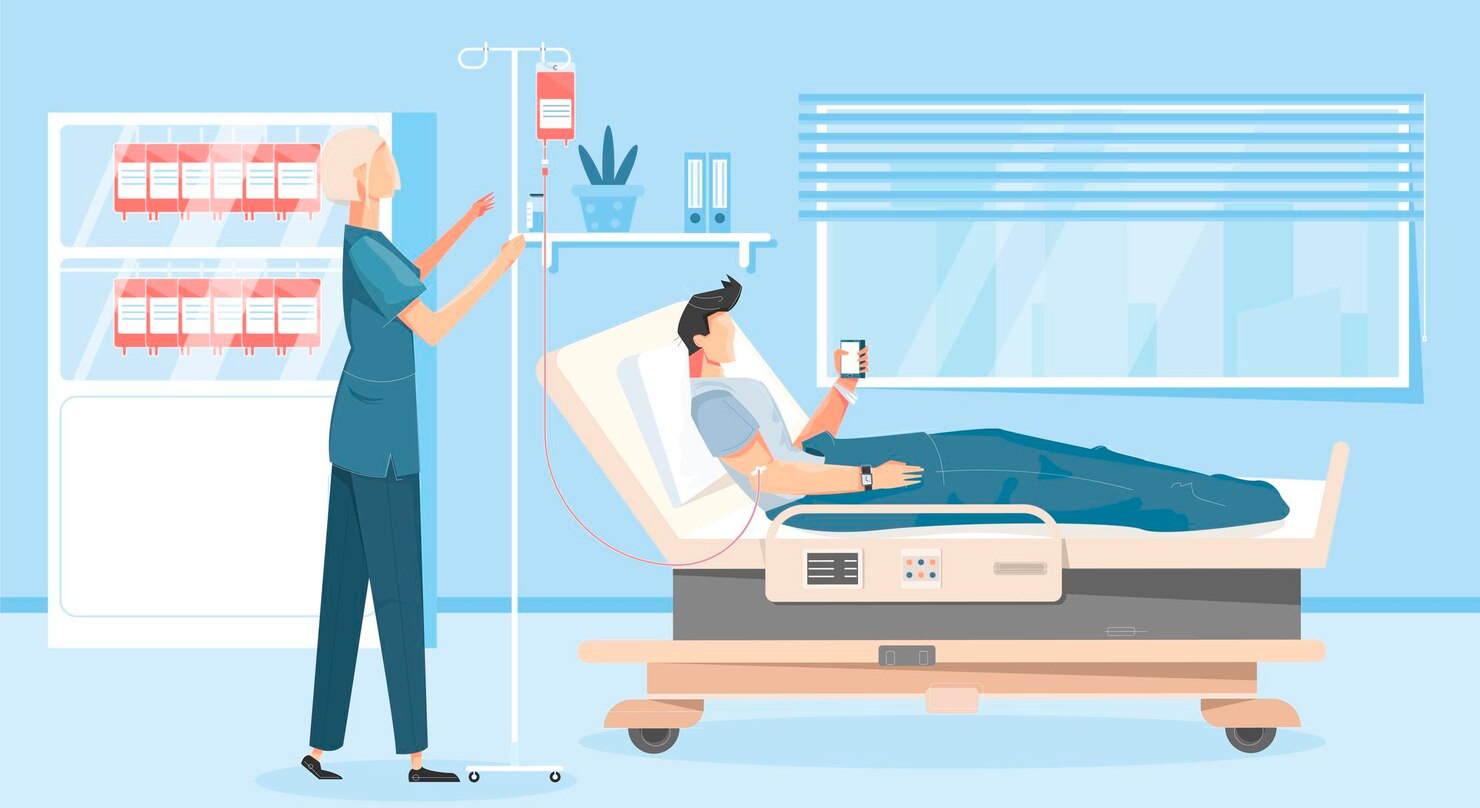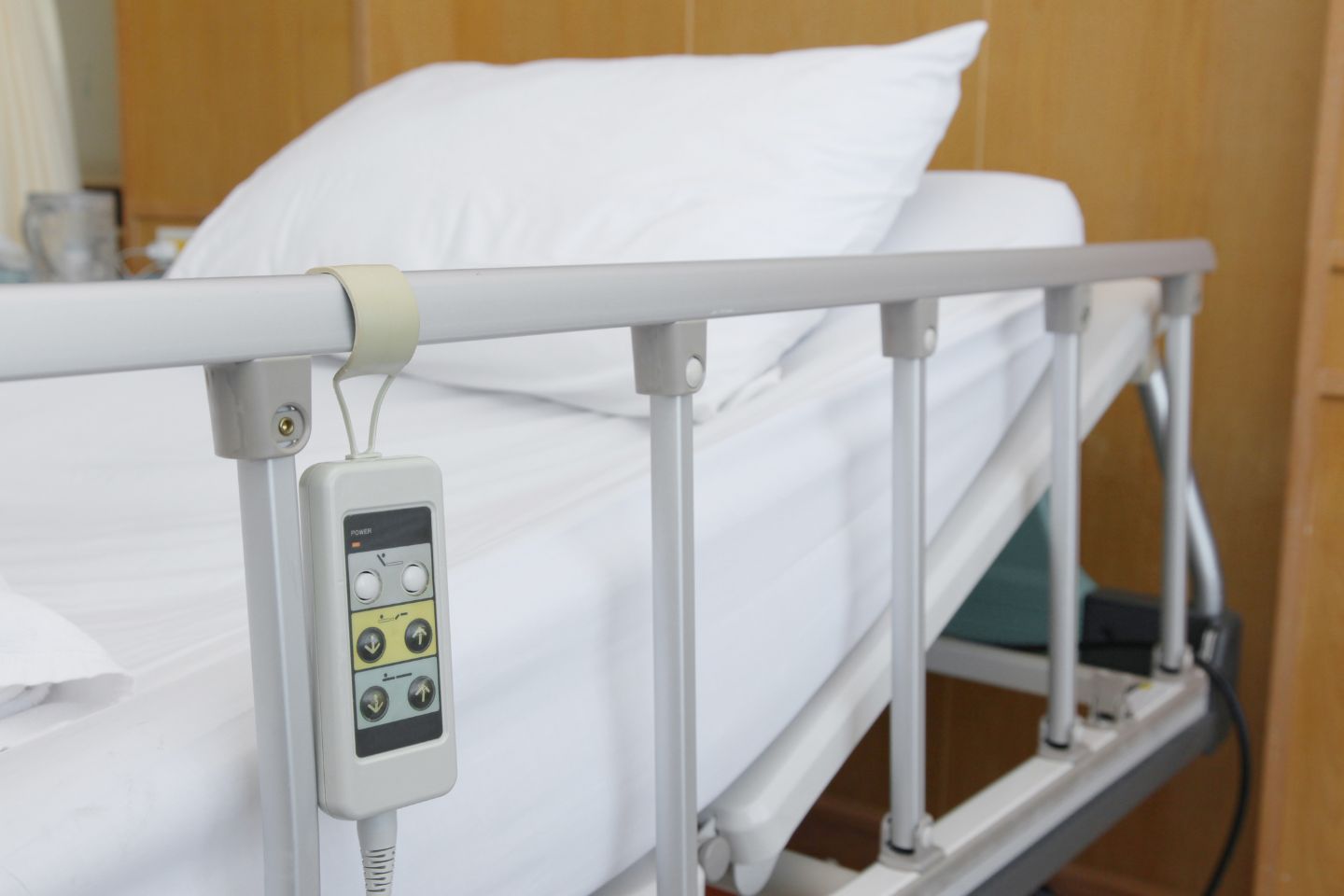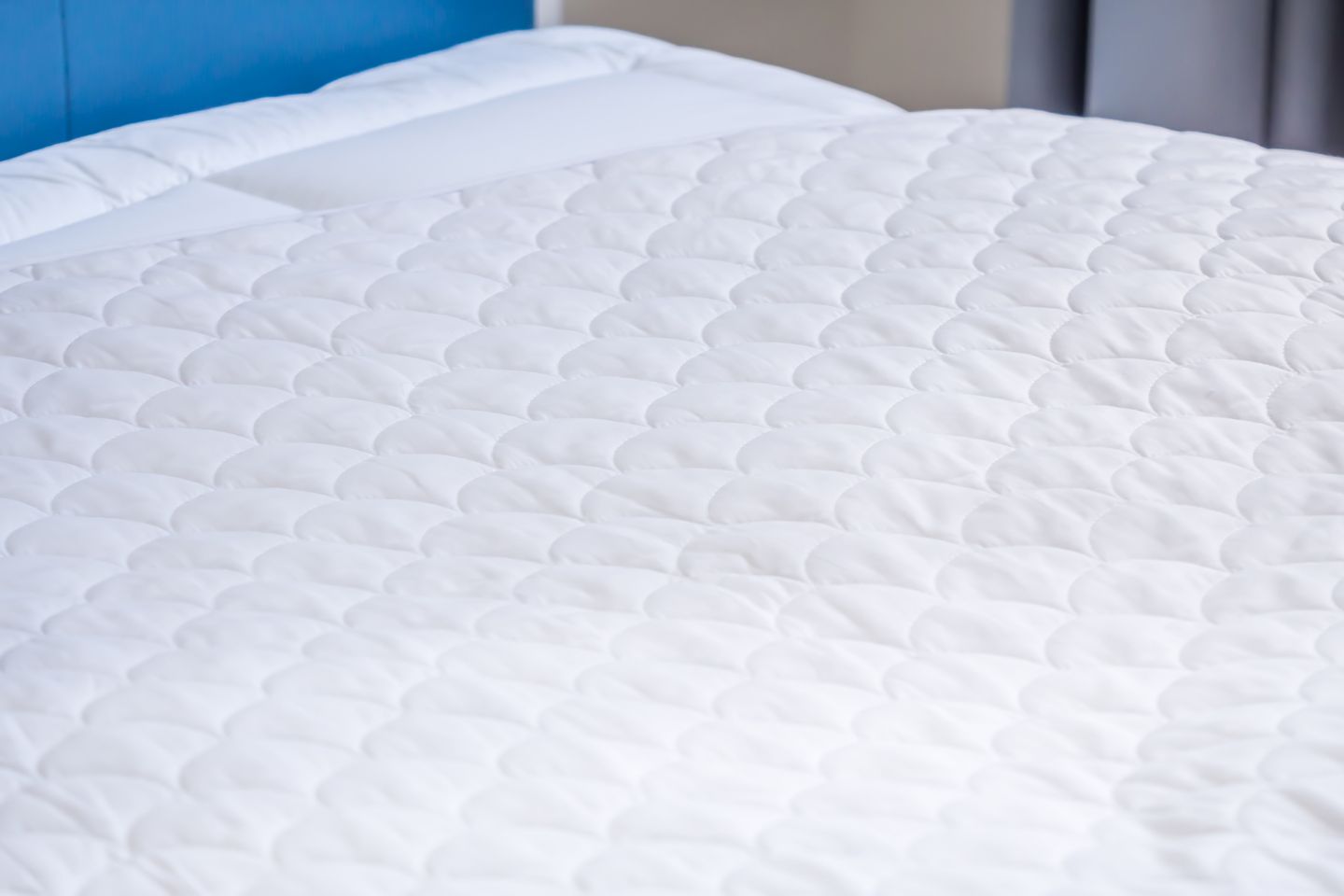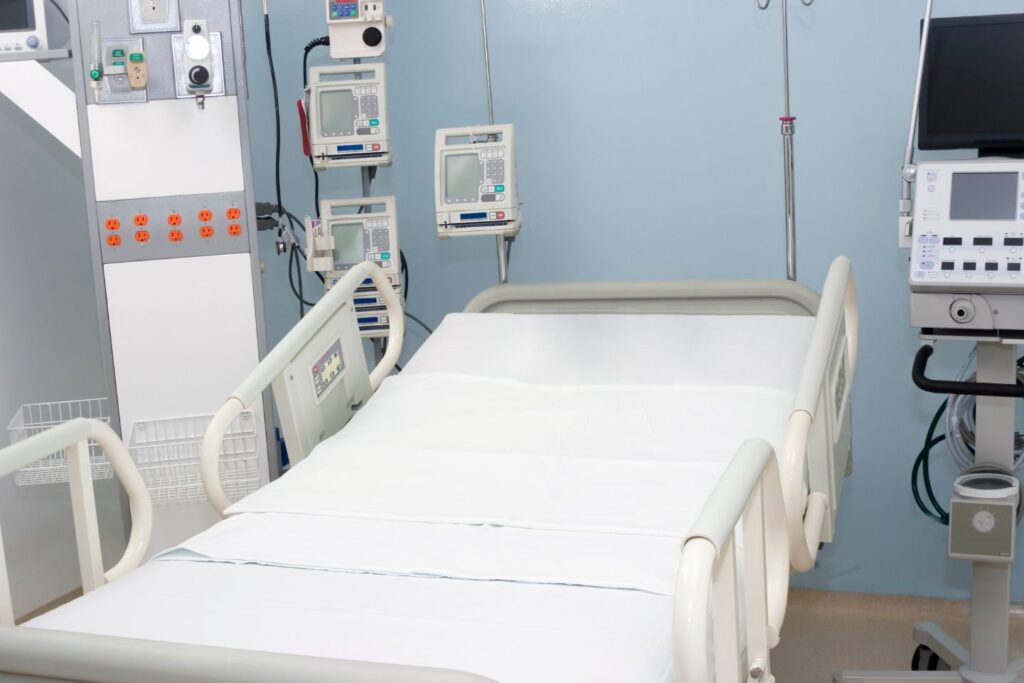Being in a hospital is not a comfortable idea altogether (unless you’re a doctor). But staying in a hospital bed is also uncomfortable. Making a hospital bed more comfortable can be a challenge, but it is essential for a patient’s recovery and well-being. It increases their psychological state, thereby helping their physical ailment become better at a better pace. Hospital beds are designed for practicality, not comfort, which can make it difficult for patients to get the rest they need. Fortunately, there are several ways to make a hospital bed more comfortable.
One of the easiest and most obvious ways to make a hospital bed more comfortable is to bring your own bedding. This can include a favourite pillow, a soft throw blanket, or a well-loved quilt. However, it is important to remember hygiene and ensure that the pillows and blankets are cleaned and changed adequately to disinfect them and make the hospital bed more comfortable. Another way to add comfort to a hospital bed is by using a mattress topper. Mattress toppers can help soften the bed or provide extra support, which can help improve blood circulation, reduce body pain, and enhance a good night’s sleep.


Understanding the Basics of Hospital Bed Comfort
When it comes to making a hospital bed more comfortable, several factors must be considered. In this section, we will explore the basics of hospital bed comfort, including the types of hospital beds, the importance of mattress quality, and the role of bed positioning.
Types of Hospital Beds
There are several types of hospital beds, each designed to meet specific medical needs. Some common types of hospital beds include:
- Standard hospital beds: These are the most common type of hospital bed, and they are designed for patients who need basic medical care.
- Low hospital beds: These are similar to standard hospital beds, but they are lower to the ground, making it easier for patients to get in and out of bed.
- Bariatric hospital beds: These are designed for patients who are obese or overweight, and they have a higher weight capacity than standard hospital beds.
- Pediatric hospital beds: These are designed for children and infants and often have colourful designs to make the hospital stay more comfortable.
Importance of Mattress Quality
The quality of the mattress is crucial when it comes to hospital bed comfort. Luckily, there’s a wide range of mattresses you can choose from that can greatly help with you to have a bit more comfort. If you’re looking to bring in your own mattress, you can consider a memory foam mattress or an air mattress. A good mattress can help prevent bedsores, improve sleep quality, and reduce pain and discomfort. Some factors to consider when choosing a mattress include:
- Pressure relief: A good mattress should distribute pressure evenly across the body, reducing the risk of bedsores.
- Support: The mattress should provide adequate support for the spine and other joints, reducing pain and discomfort.
- Durability: Hospital mattresses are subjected to a lot of wear and tear, so it’s important to choose a mattress that is durable and easy to clean.
Role of Bed Positioning
The position of the bed can also affect comfort and healing outcomes. For example, elevating the head of the bed can help improve breathing and reduce snoring, while elevating the legs can help improve blood flow and reduce swelling. Some other bed positioning tips to consider include:
- Avoiding positions that put pressure on bony areas of the body.
- Using pillows or wedges to support the body in a comfortable position.
- Adjusting the bed height to make it easier to get in and out of bed.
By understanding the basics of hospital bed comfort, you can make informed choices when it comes to choosing a hospital bed and accessories that will help you or your loved one feel more comfortable during a hospital stay.
Enhancing Comfort with Bed Adjustments
Adjusting the bed to the right height is crucial for enhancing comfort. You don’t want to be too high or too low, which can cause discomfort and even pain. The bed height should be adjusted so that your feet can rest flat on the floor while sitting on the bed’s edge. This is especially important if you must get in and out of bed frequently.
Adjusting Bed Height
Most hospital beds come with adjustable height settings. To adjust the height, locate the bed control panel and find the height adjustment button. Press the button to raise or lower the bed to the desired height. Make sure to test the height by sitting on the edge of the bed to ensure it’s comfortable for you.


Head and Foot Elevation Techniques
Another way to enhance comfort is to elevate the head and foot of the bed. This can help alleviate pressure on certain parts of the body, such as the back and legs. To elevate the head of the bed, locate the bed control panel and find the head elevation button. Press the button to raise or lower the head of the bed to the desired angle. To elevate the foot of the bed, find the foot elevation button and press it to raise or lower the foot of the bed.
Utilizing Bed Controls for Comfort
Most hospital beds come with a variety of bed controls that can be used to enhance comfort. These controls include the ability to adjust the bed height, head and foot elevation, and even the firmness of the mattress. Take the time to familiarize yourself with these controls to find the best settings for you.
Selecting the Right Bedding
When it comes to making a hospital bed more comfortable, selecting the right bedding can make all the difference. Here are some tips to help you choose the most suitable bed linens:
Choosing Suitable Bed Linens
First and foremost, you want to choose bed linens that are comfortable and soft to the touch. Look for materials that are breathable, such as cotton or bamboo, as they can help regulate your body temperature and prevent overheating.
It’s also important to choose bed linens that are easy to clean and maintain. Opt for machine-washable materials that can withstand frequent washing and drying without losing their shape or colour.
The Benefits of Using Mattress Toppers
Mattress toppers are a great way to add extra comfort and support to your hospital bed. They come in a variety of materials and thicknesses, so you can choose one that suits your specific needs.
Memory foam mattress toppers, for example, can help relieve pressure points and reduce pain in your joints and muscles. They can also help improve your posture and provide better spinal alignment.
Opting for Hypoallergenic Materials
If you have allergies or sensitive skin, choosing bedding made from hypoallergenic materials is important. Hypoallergenic bedding minimises the risk of allergic reactions and skin irritation.
Look for bedding that is made from natural materials, such as cotton or bamboo, as they are less likely to cause allergic reactions. You can also choose a bed labelled as “hypoallergenic” or “allergy-free” to ensure it meets your needs.
By selecting the right bedding, you can make your hospital bed more comfortable and help improve your overall quality of life.
Additional Comfort Measures
You can take additional measures to make your hospital bed as comfortable as possible. These measures include using pillows strategically, incorporating blankets and throws, and regulating the temperature.
Using Pillows Strategically
Pillows are a great way to add extra comfort to your hospital bed. You can use pillows to prop yourself up, support your back, or elevate your legs. If you are experiencing back pain, placing a pillow under your knees can help reduce pressure on your lower back. Additionally, you can use a wedge pillow to elevate your upper body, which can be helpful if you are experiencing respiratory problems.
Incorporating Blankets and Throws
Bringing your own blankets and throws can make a significant difference in the comfort level of your hospital bed. Hospital blankets are often thin and scratchy, so having your own soft and cozy blankets can help you feel more at home. You can also use a throw to cover your feet or legs if they get cold.
Temperature Regulation
Hospitals can be chilly, so it’s important to regulate the temperature of your bed to make it as comfortable as possible. If you are feeling cold, ask for an extra blanket or a heated blanket. If you are feeling warm, ask for a fan or to have the windows opened. You can also adjust the temperature of your bed with a heated mattress pad or a cooling pad.
By using pillows strategically, incorporating blankets and throws, and regulating the temperature, you can make your hospital bed as comfortable as possible.
Addressing Special Comfort Needs
When it comes to making a hospital bed more comfortable, it is important to address any special comfort needs that you may have. Here are some solutions for common comfort issues:


Support for Pressure Points
If you are experiencing pressure sores or other discomfort due to prolonged periods of lying down, you may want to consider adding support to your pressure points. This can be achieved through the use of specialized cushions or pillows designed to reduce pressure on sensitive areas such as the hips, tailbone, and shoulders.
Solutions for Mobility Issues
If you have mobility issues and find it difficult to move around in bed, there are several solutions that can help. One option is to use bed rails to provide support and stability when getting in and out of bed. Another option is to use an adjustable bed that can be raised or lowered to make it easier to get in and out of bed.
Customizing for Long-Term Care
If you will be spending an extended period of time in a hospital bed, it may be worth considering customizing your bed to meet your specific comfort needs. This can include adding a memory foam mattress topper for extra support or investing in a specialized hospital bed that can be adjusted to your exact specifications.
Frequently Asked Questions
What types of mattress toppers are recommended for a hospital bed?
Mattress toppers can provide additional cushioning and support to a hospital bed, making it more comfortable for patients. Memory foam and gel-infused toppers are popular choices as they help distribute weight evenly and relieve pressure points. Egg crate foam toppers are also affordable and can add extra cushioning to a hospital bed.
What are the best positions to sleep in a hospital bed to maximize comfort?
The best position for sleeping in a hospital bed depends on the patient’s condition and personal preferences. Generally, elevating the head of the bed to a 30-45-degree angle can help reduce snoring, improve breathing, and prevent acid reflux. Sleeping on the side with a pillow between the knees can also help alleviate pressure on the hips and lower back.
How can a hospice bed be made more comfortable for patients?
Hospice beds are designed to provide comfort and support to patients in their final stages of life. Adding a soft mattress topper, plush blankets, and comfortable pillows can help enhance the comfort of a hospice bed. Additionally, adjusting the bed to different positions can help alleviate pain and discomfort.
What additional bedding or pillows can improve comfort in a hospital bed?
Adding extra pillows to a hospital bed can help provide support and improve comfort. Pillows can be placed behind the back, under the knees, or between the legs to alleviate pressure points. Blankets and sheets made of soft, breathable materials can also help regulate body temperature and improve comfort.
How can the comfort of a hospital air mattress be enhanced?
Hospital air mattresses are designed to help prevent bedsores and provide support to patients who are bedridden. Adding a foam topper or a layer of memory foam can help enhance the comfort of an air mattress. Additionally, adjusting the air pressure to suit the patient’s needs can help improve comfort and prevent pressure sores.
What strategies can be used to make sleeping in a hospital chair more comfortable?
Sleeping in a hospital chair can be uncomfortable, but there are some strategies that can help improve comfort. Adding a pillow or cushion to the chair can provide extra support and help alleviate pressure points. Additionally, adjusting the angle of the chair to a reclined position can help improve breathing and reduce discomfort.
The Personal Injury Center Can Help You
Connect with The Personal Injury Center for expert legal assistance in personal injury cases. Our experienced lawyers will guide you through the complexities of the legal process, ensuring you understand your rights and options. Trust us to fight for the compensation you deserve. Contact The Personal Injury Center now to take the first step towards justice.
Disclaimer: Last update on 2024-07-27 / Affiliate links / Images from Amazon Product Advertising API.
This content is provided solely for educational reasons and should not be seen as medical guidance. It’s important to consult with a healthcare expert prior to making any changes to your health regimen, including dietary adjustments or the use of supplements.
Pages on this website may contain affiliate links. As an Amazon Associate, we receive a commission from qualifying purchases. This commission is at no extra cost to you.



